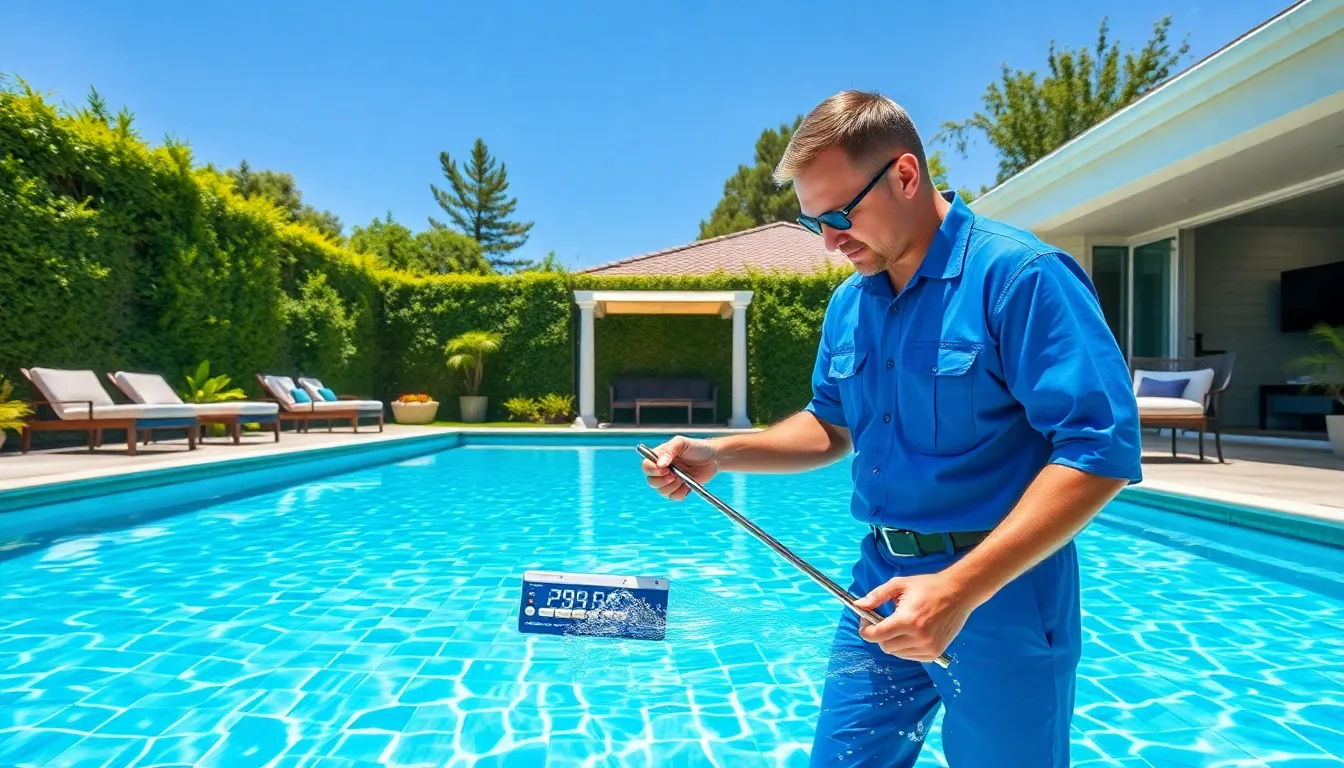So, you’ve decided to jump into the world of pool ownership, congratulations. But wait, before you cannonball into the fun, let’s talk about something that might make you rethink your chlorinated paradise: pool maintenance costs. Yes, maintaining a pool is like having a pet that needs a daily bath, a haircut, and a constant supply of treats. If you’re scratching your head at how much this might set you back, don’t worry. You’re not alone. Let’s explore the ins and outs of pool maintenance expenses so you can keep your pool sparkling and your bank account intact.
Table of Contents
ToggleUnderstanding Pool Maintenance Costs

When it comes to owning a pool, the costs can be as fluctuating as the water levels after a heavy rain. Most homeowners should budget anywhere from $80 to $150 a month for routine maintenance. This typically includes services like cleaning, chemical balancing, and equipment checks. But, expenses can sway dramatically based on several factors, from the size of the pool to the type of maintenance needed. Expect to spend a bit more during peak seasons, particularly in the summer when everyone is trying to enjoy their backyard oasis.
But here’s the kicker: regular maintenance can actually save you more in the long run by extending your pool’s lifespan and preventing costly repairs later. A stitch in time really does save nine. So, let’s dig deeper into what chunks of change you might see disappearing from your wallet.
Factors Influencing Pool Maintenance Expenses
Numerous elements play a significant role in determining how much pool maintenance will set you back. For starters, let’s consider the type of pool. In-ground pools typically require more upkeep than above-ground options. The materials used, such as concrete, fiberglass, or vinyl, also influence maintenance costs. Concrete pools, while durable, can be more expensive to maintain due to the porous surfaces that require regular treatment.
Besides, the location is essential. Residents in warmer climates often face higher maintenance costs because of algae growth and the need for more frequent chemical balancing. Seasonality is another factor: winterizing a pool can add a few hundred dollars to your annual maintenance bill. Last but not least, the age and condition of your pool equipment can significantly impact costs. Older pumps or filters might consume more energy and require more frequent repairs.
Types of Pool Maintenance Services
Understanding the types of maintenance services available can help homeowners navigate their costs more effectively. Some basic services include:
Weekly Cleaning
This service typically includes skimming the surface, brushing walls, and vacuuming to remove debris.
Chemical Balance
It ensures that pH, chlorine levels, and alkalinity are within safe limits. This service might require a visit at least once a week during the busy summer months.
Equipment Inspections
Regular checks ensure that the pump, filter, and heater are in optimal condition. Any small issue can spiral into a larger one if not caught early.
Seasonal Maintenance
This type of service is essential for closing and opening pools, particularly in colder climates. It includes tasks like removing water, cleaning the cover, and prepping the system for a new season.
Repairs
This is typically the wildcard expense that can hit unexpectedly. It’s always a good idea for homeowners to have a small fund set aside for repairs.
DIY Pool Maintenance vs. Professional Services
When it comes to maintaining a pool, homeowners face a crucial choice: go the DIY route or hire professionals. On one hand, tackling tasks like skimming and vacuuming yourself can save money. Basic pool maintenance tools, including a skimmer and vacuum, are relatively inexpensive. Plus, it can be kind of enjoyable. Nothing says summer like getting your hands wet while prepping for a backyard barbecue.
On the flip side, professional services can deliver incredible benefits. They not only have access to industry-grade equipment but also possess the expertise to spot issues that you might overlook. They can save a lot of headaches when it comes time for repairs. Homes might end up investing more upfront for professional services, but the long-term reliability may be worth it.
Budgeting for Pool Maintenance
Budgeting for pool maintenance involves understanding both recurring and one-time costs. Start by looking at the annual averages:
- Monthly Management: $80 – $150 for routine maintenance.
- Chemical Costs: Around $20 – $50 monthly to shock and stabilize your water.
- Seasonal Costs: Budget approximately $200 – $400 for seasonal opening and winterizing.
Also, don’t forget to allocate for repairs. Setting aside approximately 10% of your overall budget can help cover unforeseen issues that pop up. Remember, staying above water with finances will keep your pool fun and stress-free.
Long-Term Pool Maintenance Costs
Long-term costs associated with maintaining a pool can be significant, sometimes amounting to thousands of dollars over a decade. For instance, consider that maintaining a pool for ten years could range from $7,000 to upwards of $15,000, depending on the factors mentioned earlier. Regular upkeep tends to yield better aesthetics and chemistry, which translates into more fun weekends rather than crisis management.
Also, remember that pools require occasional renovations, which can range from resurfacing to upgrading older systems. Keeping these costs in mind will help pool owners prepare for the long haul and enjoy their backyard paradise.



